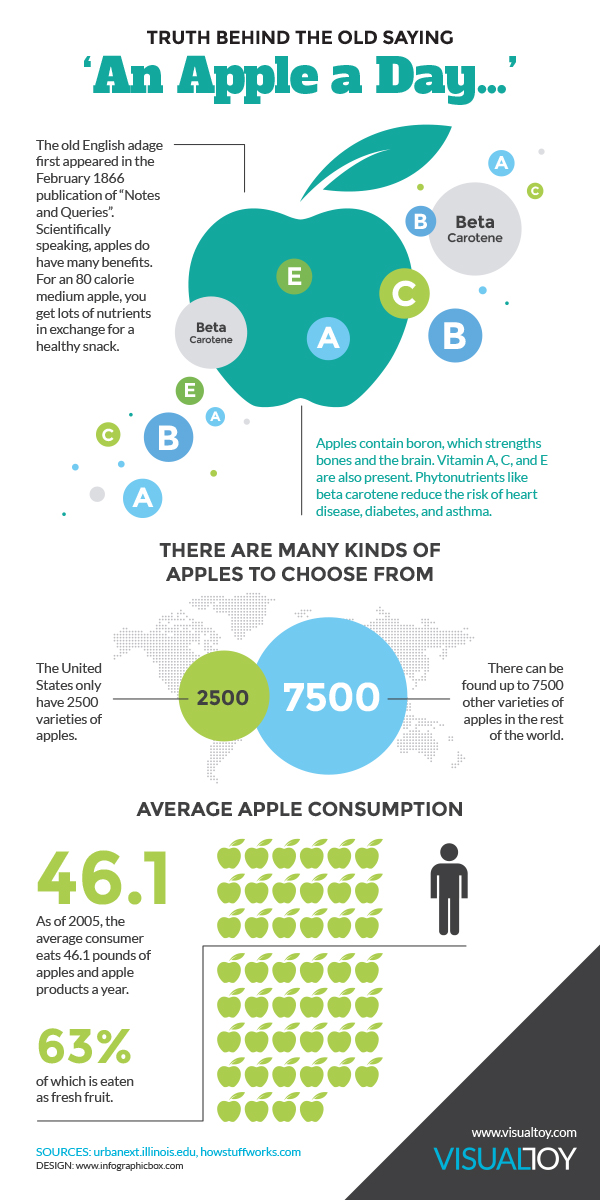
An Apple A Day
Everyone has heard “an apple a day keeps the doctor away.” This old English adage was first published in 1866, and continues to be a popular expression today. Scientifically speaking, the saying does have merit. Apples are full of nutrients, and at only 80 calories, a medium sized apple can be a very healthy snack.
Positive Components to Apples
One of the many nutrients found in apples is Boron, which can strengthen bones and improve brain function. Another nutrient is Beta Carotene, which can reduce the risk of asthma, diabetes and heart disease. Apples also contain Vitamins A, C and E.
Another important component of apples is Quercetin, which can reduce the risk of getting various cancers, including lung and breast cancer. This nutrient can also reduce the damage done by free radicals, which are associated with Alzheimer’s disease.
How Apples Help
The benefits of apples can improve and strengthen the immune system. They can also alleviate hypertension, protect against osteoporosis and prevent strokes. In addition, because apples are naturally high in fiber, they can aid the digestive process.
Pectin, a form of fiber found in apples, lowers blood pressure and glucose levels. It also lowers the amount of LDL, known as “bad” cholesterol, in the body.
Because of their fibrous consistency, raw apples can “brush” your teeth while being eaten, eliminating mouth bacteria and reducing problems associated with tooth decay.
Apples have a low calorie density, which means you can eat large portions of apples while taking in relatively low amounts of calories, which is essential for a food to be “healthy.”
Different Types of Apples to Choose From
Although most people are familiar with only a few varieties of apples, such as McIntosh, Red Delicious and Granny Smith, there are many different varieties to choose from. In the United States alone there are approximately 2,500 different types of apples. In the rest of the world, up to 7,500 other varieties can be found. Many of these varieties have been created through selective breeding and cultivation.
The popularity of the adage endures, but what about the popularity of eating the fruit? As of the latest figures taken from 2005, the average person consumes 46.1 pounds of apples and apple products per year. 63% of that consumption is eaten as fresh fruit.
Apples are a very versatile food. They are an essential ingredient in many recipes, especially in desserts, most notably in apple pie. They can also be stewed or baked, or cooked and added to meat dishes. Apple sauce is another common use for apples.
Apples are one of the most widely cultivated fruits in the world, relatively inexpensive and easy to find, and an important part of many cultures’ meals.
Eating an apple every day can actually help make you healthy enough to keep sicknesses and doctors away.